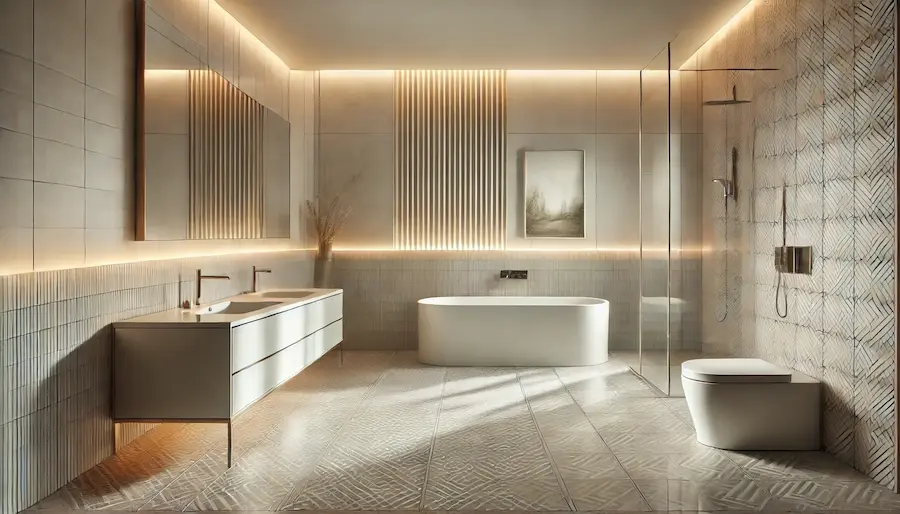Porcelain tile bathrooms offer a blend of durability, versatility, and aesthetic appeal, making them a popular choice for modern interiors. This article explores the history, key features, applications, and considerations for incorporating porcelain tiles into your bathroom design.
Introduction to Porcelain Tile Bathrooms
Porcelain tiles are a subtype of ceramic tiles, distinguished by their higher density and lower water absorption rate. Manufactured from refined clay and fired at higher temperatures, they are exceptionally hard and moisture-resistant, making them ideal for bathroom environments.
History and Origins of Porcelain Tiles
Originating in China over a thousand years ago, porcelain has a rich history in art and architecture. Its introduction to Europe in the 18th century led to widespread admiration and use in various applications, including flooring and wall coverings. In contemporary bathroom design, porcelain tiles are favored for their durability and wide range of design options.
Key Features of Porcelain Tile Bathrooms
- Durability: Porcelain tiles are highly resistant to wear, scratches, and moisture, making them suitable for high-traffic and wet areas.
- Low Maintenance: They are easy to clean and maintain, often requiring only regular sweeping and occasional mopping.
- Design Versatility: Available in various colors, patterns, and finishes, porcelain tiles can mimic natural stone, wood, or even concrete, allowing for diverse design aesthetics.
- Water Resistance: Their low porosity makes them highly resistant to water absorption, a crucial feature for bathroom applications.
Applications of Porcelain Tiles in Bathrooms
- Flooring: Porcelain tiles provide a durable and water-resistant flooring option, suitable for the humid bathroom environment.
- Walls: They can be used on walls to create sleek, easy-to-clean surfaces, enhancing both functionality and aesthetics.
- Shower Enclosures: Porcelain tiles are ideal for shower walls and floors due to their moisture resistance and durability.
- Countertops: While less common, porcelain tiles can be used for countertops, offering a durable and heat-resistant surface.
Considerations When Choosing Porcelain Tiles for Bathrooms
- Installation: Porcelain tiles can be more challenging to cut and install due to their density; professional installation is often recommended.
- Cost: They are generally more expensive than standard ceramic tiles, which may impact budgeting for your project.
- Slip Resistance: It’s important to choose tiles with appropriate slip resistance, especially for flooring in wet areas, to ensure safety.
- Design Cohesion: With numerous design options available, selecting tiles that complement the overall bathroom aesthetic is crucial for a harmonious look.
Conclusion
Porcelain tiles offer a durable, versatile, and aesthetically pleasing option for bathroom designs. By understanding their features and considering factors such as installation and slip resistance, you can create a functional and beautiful bathroom space that stands the test of time.
